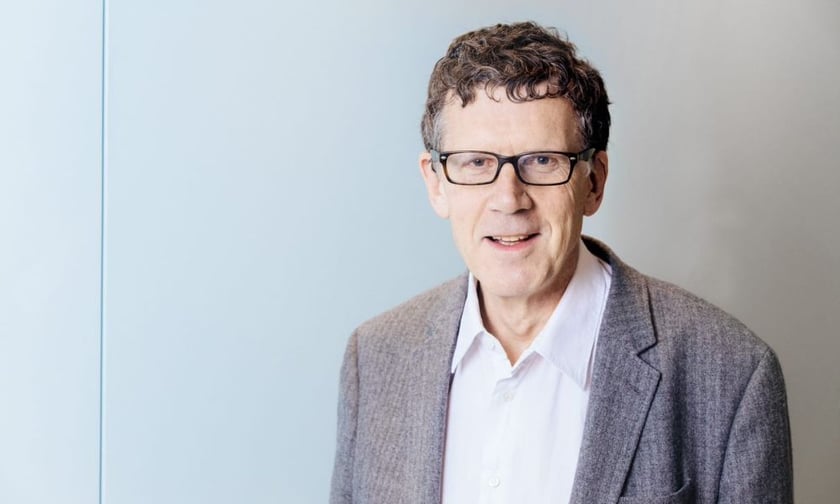

The human and economic devastation of recent catastrophe events - including the earthquakes in Morocco, Turkey and Syria, and the wildfires in Maui - have illuminated the harsh reality of the global insurance protection gap.
Speaking with Insurance Business in a recent interview, chief research officer at Moody’s RMS Robert Muir-Wood (pictured) noted that this protection gap – estimated at $1.8 trillion by Swiss Re for 2022 – is a more complex consideration than just uninsured assets. Comparing the “embarrassingly low” ratio of insured losses to the damages incurred in Turkey reveals that the protection gap is not simply a matter of having a policy, but also of having the right sums insured.
“In Turkey, most homeowners have obligatory earthquake insurance, it’s not for a lack of earthquake insurance itself,” he said. “It's simply that the payout for earthquake damage is so low in comparison with the actual cost of reconstruction. But Turkey has been heralded as a success, where the protection gap, if you measure it in terms of what proportion of people have insurance, is actually lower than it is in somewhere like California. But if you measure it in terms of how much a risk’s cost is covered, then it's a yawning protection gap.”
Assessing the critical importance of risk modelling in bridging the climate protection gap, Muir-Wood highlighted that Moody’s RMS has traditionally invested in model development based on where it sees opportunity in a specific market, sector or economy. A phrase he coined some time ago, he said, is that “models make markets” and that’s rooted in the idea that if you can model the risk, you can give confidence to how people trade it and price it – and so help expand and extend the insurance industry.
“In terms of protection gaps, having modelling in place is a critical component of expanding insurance,” he said. “It's not the only factor but it's an important one. One feature that we’ve embarked on is what we call climate on demand. That’s modelling location-level risk for ultimately seven perils for wherever there’s the possibility or actuality of people living there and there being economic activity.
“Through our ambition to do this globally, we are moving closer to the provision of principal risk modelling available worldwide. And that, in particular, is what is needed in terms of reducing the protection gap in lower-income countries. That’s something we’re working on right now that in the future has the potential to bridge that gap.”
A key topic on the agenda of the next COP meeting happening in November is the subject of Loss and Damage, which is assessing the negative implications that climate change impacts may have had on poorer countries. Several of these countries believe they have been damaged as a result of emittances of greenhouse gases from richer countries, he said, and they want compensation for that.
“The rich world has been told to go away and come up with a solution for this,” he said. “I don’t know if they have come up with a solution yet but almost certainly, some form of insurance is a key part of the Loss and Damage agenda. The rich world may be expected to pay the premium of an insurance mechanism, which covers risks that are not currently insured - which are the focus of poorer communities - then the risk modelling that we are trying to expand all around the globe is going to be very important for enabling that.”
Amid the opportunities risk modelling presents for helping to close the global insurance protection gap, Muir-Wood also assessed whether advanced risk modelling could lead to certain risks becoming uninsurable. While it’s a fair question, he said, it’s important to remember that modelling is the underlying reality of risk and not to blame for the results it produces. And there are already examples where it’s no longer possible to buy insurance because the risk is considered too high, including in certain areas of the Bahamas.
“In the Bahamas, what happened is that people realised that if you built your house on concrete stilts, you could make it insurable again, because the risk is a function of storm surge from hurricane flooding in very low-lying areas,” he said. “We are also seeing certain situations in the coastal locations of Florida, and in California where people want to live as close as possible to the forest – where the level of risk may be too high.”
In situations such as these examples in the US, he said, it’s often not a question of the risk being uninsurable per se but more that insurers can’t get the premium required to support the coverage. This is particularly relevant in cases where you have state-based regulators who determine pricing thresholds, as the market may determine that the risk is too high to write that risk below the threshold set by the insurance commissioner.
“It’s that which is forcing the question about insurability because the insurance industry given free rein would find a way of pricing that risk,” he said. “In the UK, we have the situation with flood risk whereby those who are at the highest risk have been put in a catastrophe pool arrangement… That’s an interesting mechanism and one which could be applied in other areas.
“Of course, the challenge in the UK is that this process is meant to come to an end in 2039 on the basis that by then, they’ll have solved the problem. But by then, the problem may well have got worse because of climate change. So the idea that any of these risks will go away neatly, well, I just don’t think it’s going to happen.”
What are your thoughts on this story? Feel free to share them in the comment box below.
